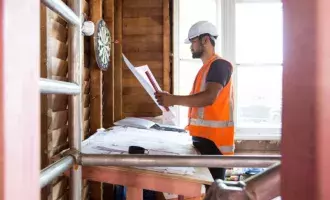In an increasingly interconnected world, the role of local government in driving regeneration has never been more critical. The challenges faced by public sector service providers are vast, ranging from financial constraints to evolving public expectations.
However, these challenges also present unique opportunities for innovation and collaboration. By leveraging the interconnected nature of the public sector, local governments can create resilient, sustainable, and thriving communities.
Local government regeneration is not just about improving infrastructure or services; it's about transforming communities and enhancing the quality of life for residents. The interconnectedness of today's world means that the actions of local governments have far-reaching impacts, influencing economic stability, social cohesion, and environmental sustainability. By focusing on and joining up place-based strategies, local governments can create powerful partnerships that address unique local priorities, foster collaboration, and drive long-term positive regeneration.
The importance of the right, long-term approach to regeneration is underscored by the pressing need to adapt to changing demographics, economic conditions, and environmental challenges. As populations grow and urbanise, the demand for efficient public services, growth corridors, sustainable infrastructure, and inclusive community spaces increase. Local governments are at the forefront of addressing these demands, making strategic decisions that shape the future of their communities
In this context, local government regeneration is a multifaceted endeavour that requires a holistic approach. It involves not only physical infrastructure improvements but also social, economic, and environmental initiatives that collectively enhance the well-being of communities. By leveraging data, technology, and partnerships, local governments can create integrated solutions that address complex challenges and unlock new opportunities for growth and development.
Key challenges in local government regeneration
Local governments face significant financial pressures, with rising operational costs and the need for longer-term funding to achieve the aspiration of delivering exceptional public services. But the reality is that there is a constant challenge to just deliver existing service levels. Many public sector estates suffer from underinvestment, leading to deteriorating buildings and infrastructure. Ensuring safety, compliance, and sustainability in aging facilities is a daunting task.
Achieving ambitious net zero targets requires substantial investment and strategic planning. The built environment contributes significantly to emissions, making it imperative for local governments to adopt sustainable practices. The public sector is grappling with a shortage of skilled professionals, impacting the ability to deliver high-quality services and manage complex regeneration projects.
Effective regeneration requires collaboration across different sectors and organisations. However, varying priorities, cultures, and commitment levels can hinder seamless cooperation.
Practical recommendations for interconnected regeneration
By adopting a collaborative and forward-thinking approach, local governments can drive meaningful change and create vibrant, sustainable communities that thrive in the face of adversity. Here are some practical recommendations:
- Recognising the identity of your place: understanding the unique qualities and local needs of each locality is crucial. Engaging with residents, businesses, and stakeholders can provide valuable insights for informed decision-making and foster a shared vision for the community. This interconnected approach ensures that regeneration efforts are tailored to the specific needs and aspirations of the community.
- Utilising data-driven insights and AI: leveraging data-driven insights and innovative technologies can significantly enhance estate management, improve service delivery, and drive sustainability. For example, smart buildings can reduce energy costs and improve operational efficiency by using real-time monitoring and environmental controls. Additionally, integrating AI and data analytics into estate management can help identify priorities for changes and improvements, ensuring that resources are used effectively.
- Building strong partnerships: building strong partnerships with public and private sector organisations can unlock new funding sources, share expertise, and drive collective action towards common goals such as net zero. Collaborative efforts can lead to innovative solutions that address complex challenges and create new opportunities for growth and development. For instance, partnerships can facilitate the repurposing of underutilised assets into strategic investments that benefit the community.
- Addressing skills shortages: addressing skills and capacity shortages requires a strategic approach to workforce development. Investing in training and development programs can equip public sector employees and nurture future leaders with the necessary skills to manage regeneration projects effectively. Additionally, flexible workforce solutions can help manage workload surges and address critical skills shortages, ensuring seamless operations.
- Making the most of devolution: there’s little doubt that devolution will continue to gather momentum, leading to decentralised decision-making and regional autonomy. The additional powers and funding will help to unlock new strategic partnership opportunities and will provide renewed impetus for collaborative initiatives.
- Strategic estate management: effective estate transformation goes beyond cost-cutting and resource optimisation. It requires a fundamental rethink of how assets can better serve diverse communities, support public services, and enhance economic resilience. By repurposing underused or outdated properties, the public sector can create vibrant, high-performing spaces that drive better service delivery, environmental sustainability, and financial stability.
- Achieving net zero: achieving ambitious net zero targets requires substantial investment and strategic planning. Local governments play a pivotal role in this effort, especially with large, aging estates that often fall short in their energy efficiency ratings. Implementing comprehensive decarbonisation plans and retrofitting buildings to enhance energy efficiency can significantly reduce carbon emissions and contribute to long-term sustainability.
In summary
By addressing the key challenges and implementing practical recommendations, local governments can transform their communities into resilient, sustainable, and thriving places. The interconnectedness of today's world means that the actions of local governments have far-reaching impacts, influencing economic stability, social cohesion, and environmental sustainability. By focusing on place-based strategies and fostering collaboration, local governments can drive long-term positive regeneration and enhance the quality of life for residents.
Find out more about our services to transform local places:

Alun Parfitt
Strategy Director of Local Government and Place, Capita
Alun has spent his entire 30-year career in local government delivering innovative solutions to complex problems that have benefited the communities which he has worked in. He has a wealth of experience across the sector and has benefited from leads roles in a number Joint Venture Companies on behalf of Capita. During his career in Capita he has been fortunate enough to have a varied career delivering bespoke, innovative solutions; setting up ground-breaking public/private partnerships and dealing with complex end of partnership negotiations.







